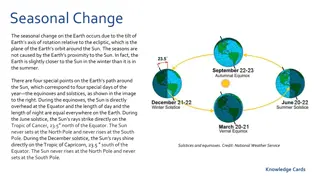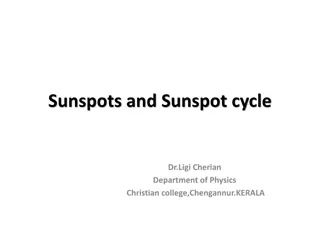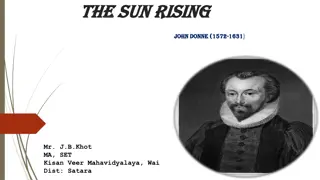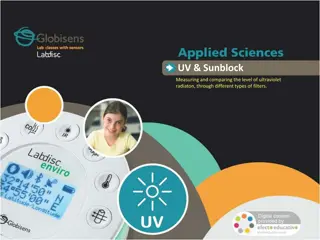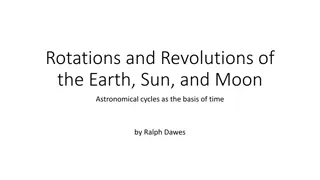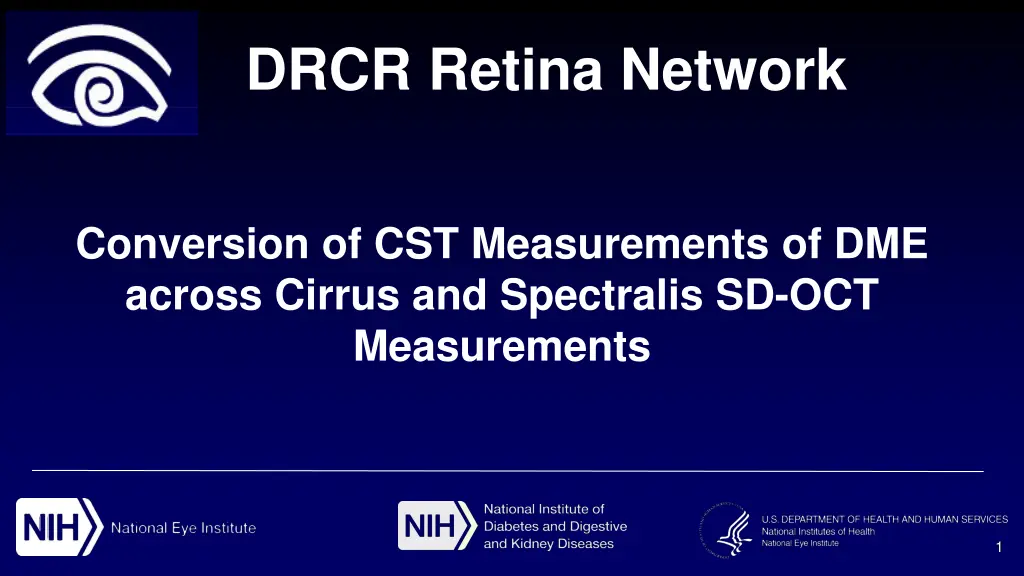
Network Conversion of CST Measurements in DME: Cirrus vs. Spectralis SD-OCT
Explore the challenges in comparing CST measurements across Cirrus and Spectralis SD-OCT instruments for diabetic macular edema (DME) and the development of equations to enable conversion between the two systems. Learn about the methodology, objectives, and validation processes involved in this study, aiming to facilitate accurate statistical analysis and monitoring of CST changes over time across different OCT machines.
Download Presentation

Please find below an Image/Link to download the presentation.
The content on the website is provided AS IS for your information and personal use only. It may not be sold, licensed, or shared on other websites without obtaining consent from the author. If you encounter any issues during the download, it is possible that the publisher has removed the file from their server.
You are allowed to download the files provided on this website for personal or commercial use, subject to the condition that they are used lawfully. All files are the property of their respective owners.
The content on the website is provided AS IS for your information and personal use only. It may not be sold, licensed, or shared on other websites without obtaining consent from the author.
E N D
Presentation Transcript
DRCR Retina Network Conversion of CST Measurements of DME across Cirrus and Spectralis SD-OCT Measurements 1
Background Central subfield thickness (CST) measured on Cirrus (Carl Zeiss Meditec), Spectralis (Heidelberg Engineering) and Stratus OCT instruments cannot be directly compared or combined for statistical analysis. Outer retinal boundaries are drawn at different locations Cirrus: internal limiting membrane (ILM) to the inner third of the retinal pigment epithelium (RPE) Spectralis: ILM to Bruchs Membrane Stratus: ILM to the ellipsoid zone, 1-3 1. Diabetic Retinopathy Clinical Research Network Writing Committee, Bressler SB, Edwards AR, et al. Reproducibility of spectral-domain optical coherence tomography retinal thickness measurements and conversion to equivalent time-domain metrics in diabetic macular edema. JAMA Ophthalmol. 2014;132(9):1113-1122. Lee JY, Chiu SJ, Srinivasan PP, et al. Fully automatic software for retinal thickness in eyes with diabetic macular edema from images acquired by cirrus and spectralis systems. Invest Ophthalmol Vis Sci. 2013;54(12):7595-7602. Willoughby AS, Chiu SJ, Silverman RK, et al. Platform-Independent Cirrus and Spectralis Thickness Measurements in Eyes with Diabetic Macular Edema Using Fully Automated Software. Transl Vis Sci Technol. 2017;6(1):9. 2. 2 3..
DRCR Protocol O1 Formulated equations to convert CST to Stratus equivalents ??????? = 43.12 + 1.01 ?????? ??????? = 72.76 + 1.03 ?????????? We use these equations To report summary statistics (ex baseline CST) in terms of Stratus To calculate CST change over time when different machines are used The last OCT scan on a Stratus machine in a DRCR study was in 2016. 1. Diabetic Retinopathy Clinical Research Network Writing Committee, Bressler SB, Edwards AR, et al. Reproducibility of spectral-domain optical coherence tomography retinal thickness measurements and conversion to equivalent time-domain metrics in diabetic macular edema. JAMA Ophthalmol. 2014;132(9):1113-1122 3
Objectives Develop and validate equations to convert CST measurements between Cirrus and Spectralis Cirrus to Spectralis Spectralis to Cirrus 4
Methods Data from a subset of participants from Protocol O1 had replicate scans on both Cirrus and Spectralis 374 scan pairs from 187 eyes (107 participants, 7 sites) at a single visit 70% of the data used to develop the equations; 30% to validate Data from participants in CADME2 had single scan on Cirrus and Spectralis 150 scan pairs from 35 eyes (35 participants, 1 site) over a median (IQR) of 3 (2 to 5) visits (max = 10) Used as additional validation Bland-Altman Limits of Agreement (LOAs) between predicted and observed values used to evaluate equations 1. Diabetic Retinopathy Clinical Research Network Writing Committee, Bressler SB, Edwards AR, et al. Reproducibility of spectral-domain optical coherence tomography retinal thickness measurements and conversion to equivalent time-domain metrics in diabetic macular edema. JAMA Ophthalmol. 2014;132(9):1113-1122 2. Wiley HE, Thompson DJ, Bailey C, et al. A Crossover Design for Comparative Efficacy: A 36-Week Randomized Trial of Bevacizumab and Ranibizumab for Diabetic Macular Edema. Ophthalmology. 2016;123(4):841-849 5
Participant Baseline Characteristics Protocol O Validation Data 32 68 50% / 50% 6% / 94% Protocol O Overall Protocol O Train Data CADME Data 75 63 37 62 No. of Participants Age (y), median Female / Male Type 1 / 2 Diabetes Duration of Diabetes (y), median Bilateral Participants 107 63 48% / 52% 7% / 93% 47% / 53% 8% / 92% 32% / 68% 16% / 84% 16 16 15 12 75% 75% 75% 0 6
Ocular Baseline Characteristics Protocol O Validation Data 56 Protocol O Overall Protocol O Train Data CADME Data Number of Eyes 187 131 37 VA 20/40 or better 124 (66%) 88 (67%) 36 (64%) 0 VA 20/50-20/100 46 (25%) 33 (25%) 13 (23%) 19 (51%) VA 20/100 or worse 17 (9%) 10 (8%) 7 (13%) 18 (48%) PC IOL 75 (40%) 47 (36%) 28 (50%) 0 Phakic Mean of CST Test-Retest on Spectalis, m (Median [IQR]) Mean of CST Test-Retest on Cirrus, m Median (IQR) 112 (60%) 84 (64%) 28 (50%) 37 (100%) 361 (305, 432) 365 (307, 432) 349 (305, 432) NA 340 (283, 406) 346 (290, 406) 334 (283, 398) NA 7
Relationship between Observed Spectralis vs. Observed Cirrus Over The Identity Line Protocol O Data CADME Data 800 800 CST on Spectralis, m CST on Spectralis, m 700 700 600 600 500 500 400 400 300 300 N = 150 N = 374 200 200 200 300 400 CST on Cirrus, m 500 600 700 800 200 300 400 CST on Cirrus, m 500 600 700 800 8
Relationship between Observed Spectralis vs. Observed Cirrus Protocol O Data CADME Data 200 200 CST on Spectralis - Cirrus, m CST on Spectralis - Cirrus, m 150 150 100 100 50 50 0 0 -50 -50 -100 -100 -150 -150 N = 374 N = 150 -200 -200 200 300 400 500 600 700 800 200 300 400 CST on Spectralis, m 500 600 700 800 Mean of CST Test-Retest on Spectralis, m Mean Difference: 21 m LOA: -37 to 80 Mean Difference: 9 m LOA: -8 to 25 9
Evaluation of the Cirrus to Spectralis equation Protocol O Validation Data CADME Data 800 800 Predicted Spectralis CST, m Predicted Spectralis CST, m 700 700 600 600 500 500 400 400 300 300 N = 112 N = 150 200 200 200 300 400 500 600 700 800 200 300 400 500 600 700 800 Observed Cirrus CST, m Observed Cirrus CST, m Spectralis = 40.78 + 0.95 Cirrus 10
Differences between Predicted and Observed CST on Spectralis CADME Data Protocol O Validation Data 200 Predicted - Observed Spectralis 200 Predicted - Observed Spectralis 150 150 100 100 50 50 CST, m CST, m 0 0 -50 -50 -100 -100 -150 -150 N = 112 N = 150 -200 -200 200 400 600 800 200 300 400 500 600 700 800 Spectralis Test-Retest Mean CST, m Observed Spectralis CST, m Mean Difference: 15 m LOA: -3 to 33 m Mean Difference: -1 m LOA: -69 to 69 m 11
Evaluation of the Spectralis to Cirrus equation Protocol O Validation Data CADME Data 800 800 Predicted Cirrus CST, m Predicted Cirrus CST, m 700 700 600 600 500 500 400 400 300 300 N = 112 N = 150 200 200 200 400 600 800 200 300 400 500 600 700 800 Observed Spectralis CST, m Observed Spectralis CST, m Cirrus = 1.82 + 0.94 Spectralis 12
Differences between Predicted and Observed CST on Cirrus Protocol O Validation Data CADME Data 200 200 Predicted - Observed Cirrus CST, Predicted - Observed Cirrus CST, 150 150 100 100 50 50 0 0 m m -50 -50 -100 -100 -150 -150 N = 112 N = 150 -200 -200 200 300 Cirrus Test-Retest Mean CST, m 400 500 600 700 800 200 300 400 500 600 700 800 Observed Cirrus CST, m Mean Difference: -8 m LOA: -28 to 10 m Mean Difference: -1 m LOA: -73 to 73 m 13
Percent differences between Test vs. Retest and Observed vs Converted CST 100% Spectralis Cirrus 80% 60% Percent Difference, m 40% 20% 0% -20% -40% -60% -80% -100% CADME CADME Test vs Retest DRCR Protocol O 14
Limits of Agreement Protocol O Test vs Retest Cirrus Protocol O Validation Cirrus CADME Spectralis Spectralis Cirrus Spectralis Micron Differences, m LOA -34, 34 -28, 28 -69, 69 -73, 73 -3, 33 -28, 10 (-39, -30), (30, 39) (-32, -25), (25, 32) (-86, -56), (56, 86) (-92, -59), (59, 92) (-7, 0), (30, 37) (-32, -24), (7, 15) 95% CI Relative Differences, %* 95% LOA -10%, 10% -8%, 8% -17%, 17% -22%, 22% -2%, 12% -8%, 3% (-11%, -8%), (8%, 11%) (-10%, -7%), (7%, 10%) (-21%, -14%), (14%, 21%) (-28%, -18%), (18%, 28%) (-4%, -0%), (11%, 14%) (-9%, -7%), (2%, 4%) 95% CI 15
Results Conversion equations Spectralis = 40.78 + 0.95 Cirrus Cirrus = 1.82 + 0.94 Spectralis Predicted values were within 10% of the observed values for 101 (90%) on Spectralis; 99 (88%) on Cirrus in the Protocol O validation data 136 (91%) on Spectralis; 148 (99%) on Cirrus in the CADME data 95% of converted CST measurements are expected to be within 17% (95% CI: [14%, 21%]) of CST on Spectralis 22% (95% CI: [18%, 28%]) of CST on Cirrus 16
Conclusions For DRCR and CADME datasets, the agreement observed and converted CST measurements was approximately double the test-retest scans on the same instrument. Equations are suitable for the transformation of values from individual scans as well as averaged values from cohorts of eyes with DME. These equations will be used to report future CST results in eyes with DME from the DRCR Retina Network in Spectral Domain OCT equivalents. 17
DRCR Retina Network Thank you! 18


![[PDF⚡READ❤ONLINE] Solar Surveyors: Observing the Sun from Space (Springer Praxis](/thumb/21536/pdf-read-online-solar-surveyors-observing-the-sun-from-space-springer-praxis.jpg)







